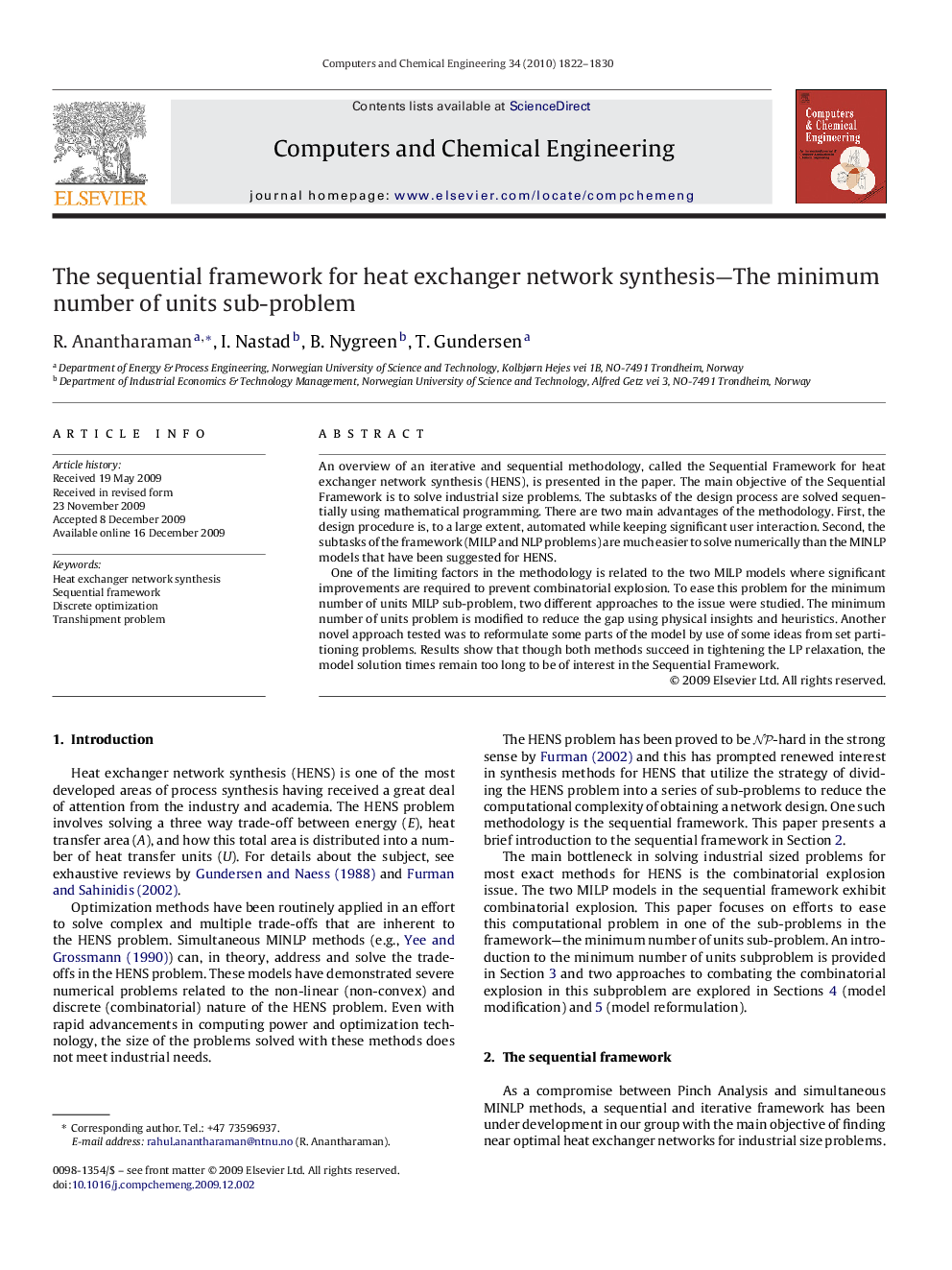| کد مقاله | کد نشریه | سال انتشار | مقاله انگلیسی | نسخه تمام متن |
|---|---|---|---|---|
| 173056 | 458574 | 2010 | 9 صفحه PDF | دانلود رایگان |

An overview of an iterative and sequential methodology, called the Sequential Framework for heat exchanger network synthesis (HENS), is presented in the paper. The main objective of the Sequential Framework is to solve industrial size problems. The subtasks of the design process are solved sequentially using mathematical programming. There are two main advantages of the methodology. First, the design procedure is, to a large extent, automated while keeping significant user interaction. Second, the subtasks of the framework (MILP and NLP problems) are much easier to solve numerically than the MINLP models that have been suggested for HENS.One of the limiting factors in the methodology is related to the two MILP models where significant improvements are required to prevent combinatorial explosion. To ease this problem for the minimum number of units MILP sub-problem, two different approaches to the issue were studied. The minimum number of units problem is modified to reduce the gap using physical insights and heuristics. Another novel approach tested was to reformulate some parts of the model by use of some ideas from set partitioning problems. Results show that though both methods succeed in tightening the LP relaxation, the model solution times remain too long to be of interest in the Sequential Framework.
Journal: Computers & Chemical Engineering - Volume 34, Issue 11, 8 November 2010, Pages 1822–1830